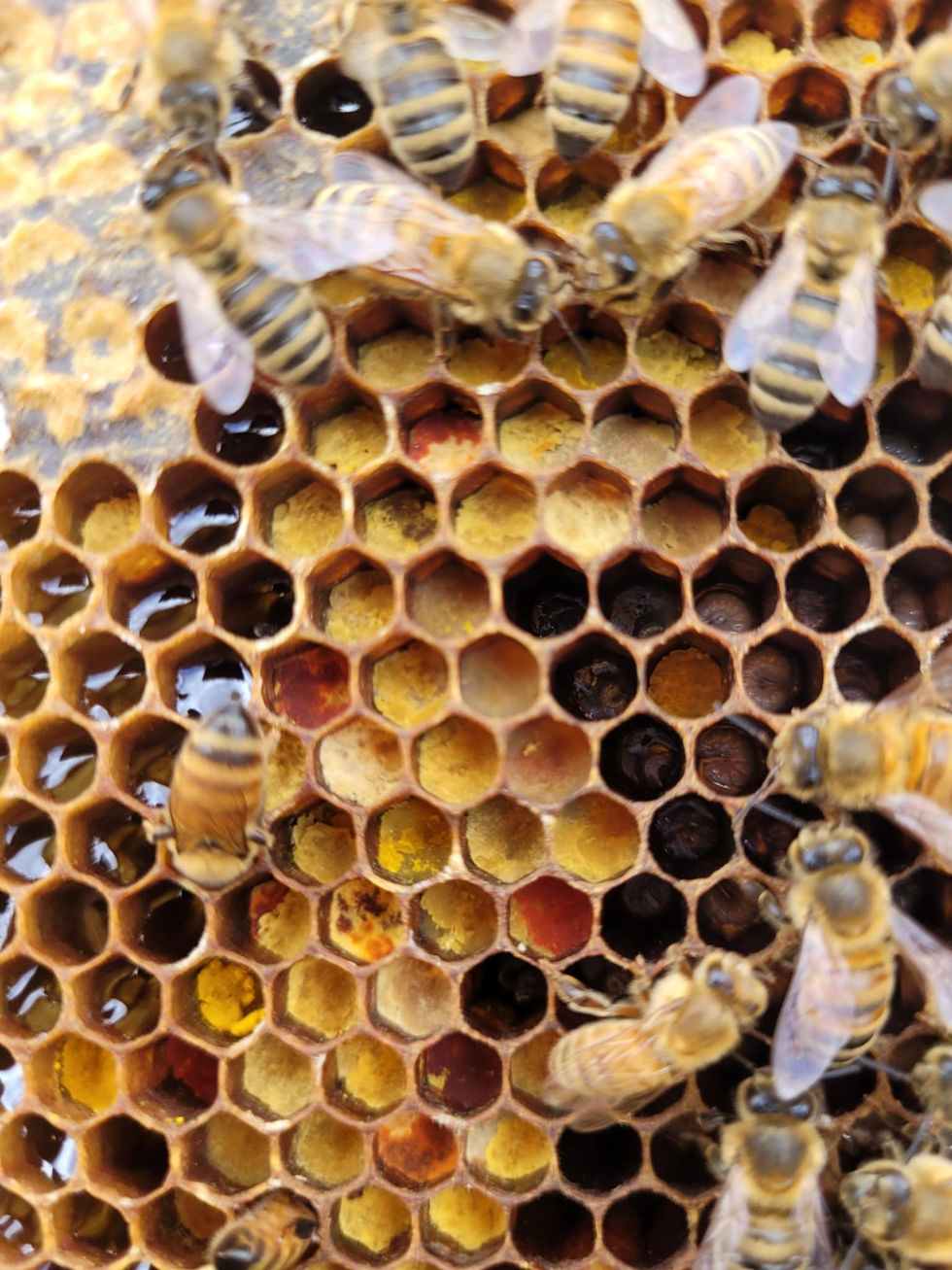Winterizing Your Chickens
- Elizabeth McKeough
- Jan 13, 2025
- 4 min read
Winterizing your chicken coop is essential for ensuring the health and well-being of your flock during the colder months. This essay will explore various strategies for winterizing chicken coops, emphasizing insulation, ventilation, and the provision of a suitable environment to keep chickens comfortable and safe. Additionally, we will discuss the benefits of proper nutrition and the importance of routine maintenance during the winter season.
One of the most critical aspects of winterizing a chicken coop is insulation. A well-insulated coop not only helps maintain a stable temperature but also reduces the risk of drafts that can lead to discomfort or illness in chickens. Insulation methods can include adding a thick layer of materials such as straw, wood shavings, dried leaves, or pine needles to the floor of the coop. These materials act as natural insulators and can significantly improve the warmth of the environment. Furthermore, during the construction of the coop, insulation boards may be installed in walls and ceilings to provide an additional layer of protection against the winter chill.
Equally important is providing adequate ventilation in the chicken coop. Proper ventilation helps prevent the build-up of dampness and ammonia, which can lead to respiratory problems and disease in chickens. This can be achieved by ensuring that there are sufficient openings such as windows and vents. However, it is essential to manage drafts effectively. For instance, covering windows and screens with clear plastic at night can help retain heat while still allowing for airflow during the day when temperatures may rise slightly. This balance is crucial for maintaining a dry and healthy environment.
Establishing a wind block around the coop can also protect chickens from harsh winter winds and precipitation. Windbreaks can be created using natural materials such as hay bales or boards. They should be positioned to shield the coop and the chickens from the predominant wind direction in your area. This added protection can prevent stress on the chickens and help keep them warm.
Another important feature to consider is the provision of dust baths within the coop. Chickens have a natural instinct to dust bathe, and this behavior helps them shed dead skin, parasites, and old feathers. Providing a dedicated area in the coop for dust bathing can contribute to your flock's overall health. The dust should consist of materials like sand, ash, and soil, creating an optimal environment for the hens to keep clean throughout the colder months.
A heated waterer is another essential addition to winterize your chicken coop effectively. In freezing temperatures, water can quickly turn to ice, making it difficult for chickens to stay hydrated. Investing in a specialized heated waterer can help ensure fresh water is available at all times. For simpler solutions, floating ping pong balls on water troughs can prevent ice formation by disrupting the surface tension. Access to fresh water contributes to the overall health of chickens and their ability to cope with cold weather.
Adopting the deep litter method can be an effective way to manage bedding in the coop. This method involves regularly stirring the existing bedding and adding fresh materials on top, creating an insulating layer that offers warmth. The decomposition of organic materials also generates heat, further increasing the temperature inside the coop. Moreover, this method reduces the workload of keeping the coop clean, as it minimizes the need for frequent bedding changes.
When winterizing their coop, chicken keepers should also pay attention to their flock's diet. Providing a nutritious diet that is higher in fat can support chickens during winter months. High-fat feeds help hens maintain their body temperature and overall energy levels when exposed to cold conditions. It is important to offer a balanced diet that includes the right amount of protein, vitamins, and minerals essential for their well-being.
Another essential consideration is the design of roosting bars. Ensuring that these bars are wide enough for chickens to sleep flat-footed can prevent frostbite on their toes. When chickens are unable to maintain heat in their feet, they are at risk of developing frostbite, which can lead to severe health issues. Regularly inspecting the roosting areas and ensuring they are safe and comfortable can contribute to a healthier flock.
Locking chickens up at night is necessary to protect them from predators and keep them warm. Chickens are vulnerable to attacks at night, and securing the coop ensures their safety. Furthermore, monitoring the surrounding area for snow accumulation can help manage access to outdoor spaces. Clearing out snow when necessary allows chickens to move outside and engage in natural behaviors, which is vital for their mental and physical health.
In conclusion, winterizing your chicken coop is a multifaceted process that involves careful planning and consideration of various factors. By applying insulation techniques, ensuring proper ventilation, implementing wind blocks, and managing a healthy environment, you can effectively keep your chickens safe during colder months. Providing nutritious diets, adequate water, and maintaining hygiene through methods like deep litter can further enhance their comfort and health. As we look to the future, it is essential to continue adapting our strategies to meet the needs of our flocks as climate conditions.








Comments